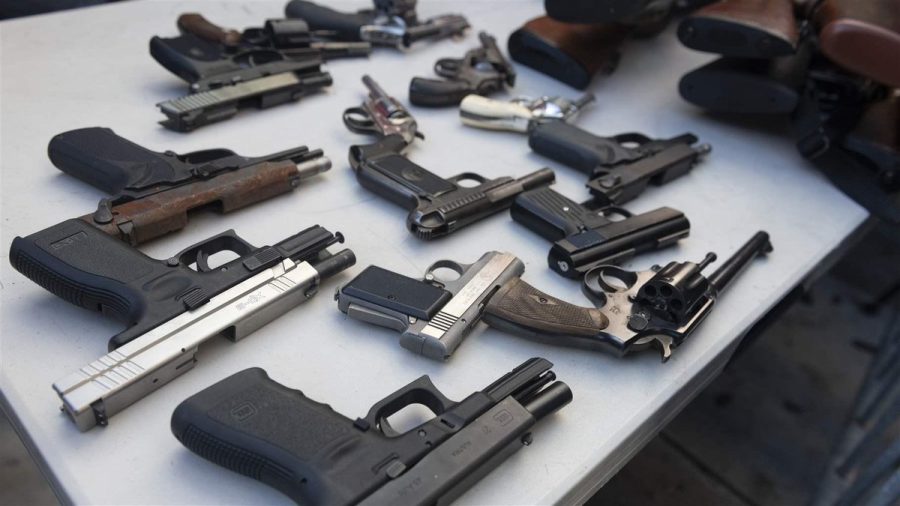Red Flag Laws Can Save Lives— And That Shouldn’t Be Controversial
Nineteen states have passed red flag laws enabling judges to remove firearms from dangerous individuals. These laws, also known as extreme risk protection orders (ERPOs), are opposed by many gun rights activists who argue that the policies violate due process protection provided by the Constitution. But the design of ERPOs is actually consistent with constitutional demands — and they prioritize safety in the same way that other protection orders already do. As long as red flag laws are understood and adequately employed, they can help mitigate the tragedy that gun violence regularly imposes on Americans.
Gun violence is highly pervasive in America today. According to CDC-published statistics, more Americans died of gun-related injuries in 2020 than in any other year, including murders and suicides. The gun death rate in the U.S. is higher than that of most other nations, and the number of active shooter incidents has sharply increased in recent years: in 2000, there were three such incidents; in 2020, that number rose to 40. If we only enact policy changes in response to mass shootings, we lose lives that proactive action could have saved. ERPOs authorize preventative measures — dangerous individuals can be disarmed before that danger escalates to injury or death.
A Virginia law review cites a study that explores the link between ERPOs and mass shootings. Of the 21 California cases explored in which orders were issued, no shooting occurred, suggesting prevention effectiveness. The benefits of red flag policies can also be more easily measured with regard to suicide prevention. The same review cited that firearms carry out most suicides in the U.S. and that 90% of suicides involving firearms end in death. Given that signs of harmful behavior are present in many cases of suicide and homicide, removing firearms from individuals who exhibit those signs would reasonably reduce the threat of death.
The effectiveness of red flag laws might be difficult to quantify, considering they are preventative measures; if they work, we won’t see the results. Regardless, the removal of firearms from dangerous individuals is hardly a controversial measure: the capacity of firearms to inflict violence is self-evident, and the danger of allowing at-risk individuals to possess weapons is commonly agreed upon. The issue lies in defining an individual as dangerously mentally ill and thus unfit to handle a firearm. Opponents of ERPOs argue that the process is inherently unjust, a reason likely attributed to a lack of understanding of how the law actually works. Though the degree and execution of red flag laws can vary from state to state, all states require a burden of proof to establish that the gun owner presents a risk. Some states only allow law enforcement to petition the court, while others include family members and medical professionals — but a full adversary hearing occurs in all circumstances.
The design of red flag laws replicates other protection clauses already in place, such as domestic violence restraining orders (DVROs), which apply in all 50 states. Opponents who believe ERPOs violate due process point to ex parte proceedings that temporarily remove firearms before the hearing occurs. However, DVROs also allow ex parte orders in crises where the risk of harm is imminent. In Fuentes v. Shevin, the Court identified that to justify a deprivation before the full hearing, the seizure must be necessary to secure a general public interest. By this standard, the state is authorized to remove firearms in crisis situations when an immediate hearing is impossible.
When a situation is deemed “extraordinary” and thus justifies a deprivation of arms before a hearing, courts also emphasize a high degree of urgency. Ex parte orders are designed to be especially temporary in order to uphold second amendment rights. In State v. Poole, the defendant argued that his requirement to surrender firearms in an ex parte restraining order violated his constitutional rights; he had not yet been condemned as unfit to bear arms and was thus still protected by the second amendment. The court, however, held that the risk of unfounded seizure was mitigated by the length of the deprivation period; the defendant was only without his gun for six days. Thus, due process rightfully prioritizes safety over the risk of erroneous deprivation but still accounts for that risk by emphasizing swift action.
A thorough review of ERPOs reveals that they abide by due process procedures, given that they prioritize public safety similarly to protection clauses like DVROs. Still, opponents will argue that they are ineffective in preventing mass shootings. Colorado, for example, adopted the policy prior to back-to-back mass shootings, but it was not able to stop either shooting because it was never initiated. No matter how widely accepted ERPOs are by state governments, they cannot lessen the pervasiveness of gun violence if no one files a report when an individual threatens violence. That being said, red flag laws will never increase the risk of gun violence — but they can decrease it if we take advantage of them.
Lindsey Osit, FCRH ’24, is a journalism major from South Windsor, Conn.










































































































































































































